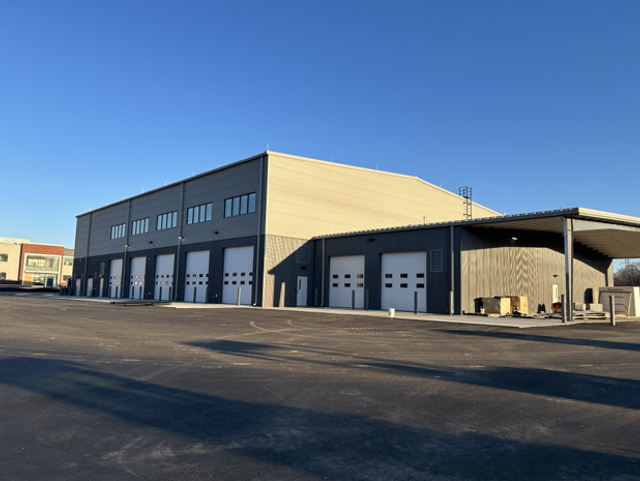Progress on the Municipal Operations Center (MOC) remains steady, with key components of the project moving forward on schedule. The Statesville Public Power building and the Vehicle Maintenance Garage are expected to be completed by the end of April or early May, providing modern, efficient spaces for electric utility services and fleet operations. The Warehouse phase is also on track, with completion anticipated in June. Low voltage work across the site is progressing well and should be finalized soon. Recent weather conditions have been favorable and have not caused any delays. Overall, the project is moving along well and will ultimately support the City of Statesville’s goal of enhancing municipal services and operational efficiency.
Key Features & Community Benefits
Phase 1: Statesville Public Power Building & Covered Parking – Enhancing operations for the city’s electric utility services.
Phase 2: Vehicle Maintenance Garage – Providing updated facilities for maintaining the city’s fleet, improving efficiency and safety.
Phase 3: Warehouse – Centralizing storage for essential equipment and materials.
Phase 4: Future Expansion – While not yet designed, this phase will incorporate workspaces for Public Utilities, Public Works, and Stormwater, further streamlining city operations.
Improved Service for Residents – Modern buildings and better-equipped facilities will allow city employees to work more efficiently, ensuring faster and more effective service to the community.

Project Timeline & Investment
Start Date: November 2023
Anticipated Completion: April 2025
Estimated Cost: $23 million
Funding Sources:
This project is fully funded by the City of Statesville, demonstrating a strong commitment to enhancing municipal operations and infrastructure.
Why This Project Matters
By modernizing the facilities that support public utilities, maintenance, and city services, the Municipal Operations Center will help ensure that Statesville remains efficient, responsive, and prepared for future growth. This investment will result in improved service delivery, reduced operational delays, and a more streamlined approach to city-wide infrastructure management.